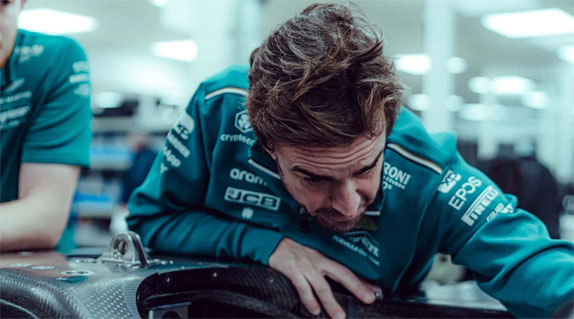Aston Martin drivers Fernando Alonso and Lance Stroll have adjusted their seats in preparation for the 2023 season. The British team’s press service described in detail the adjustment process, which can be divided into seven successive stages.
For a Formula 1 driver, a perfect fit in the car is of utmost importance, as it ensures safety and comfort. When the driver feels at one with the car, he can fully concentrate on working and getting the most out of the track.
Just as no two Formula 1 drivers are the same, no two racing seats are the same, so each seat is custom made to fit the driver in seven steps.
Step one: sit down
Wearing racing overalls and boots, the racer climbs into a fake cockpit or into a real cockpit, after which he sits on a bag filled with a special expanding foam. The foam takes shape and follows the contours of the body and the internal shape of the cockpit.
Step two: Find a comfortable position
The driver repeatedly repeats the movements he usually makes in the cockpit. For example, he turns the steering wheel so that after molding the chair from the foam, the arms and elbows are comfortable. The hardened foam shape can be cut to keep the rider out of the way.
Some riders want a seat that feels like they’re stuck in the cockpit. They want their head, neck and shoulders to be fixed and virtually immobile when flying. But there are riders who prefer more freedom in the cockpit.
Step three: digital model
The frozen form is scanned and fed into a CAD program to create a 3D model. A mold is made with this model, which is then coated layer by layer with carbon fibers and then baked in an autoclave. Holes have been made in the seat for safety features such as seat belts and the HANS system.
Step Four: Sit back down
After the finished saddle is installed in the cockpit, the rider sits in it and comments on how comfortable it is or not, which can be improved and corrected. The carbon shell can be adjusted to the rider’s requirements.
Step Five: Compliance Check
The rider should be able to reach the pedals easily and turn the handlebars all the way in either direction without obstruction. For safety reasons, the driver’s seat should not be too high – this is done to minimize the risk of injury in the event of a rollover or side impact.
Once the rider is comfortably seated in the cockpit, the team carefully measures the rider to ensure the fit meets the requirements of the technical regulations.

Step Six: Rate Fit Comfort
Saddle padding can be used to increase riding comfort, but be aware that this will increase overall weight. A layer of gold foil can be applied to the back of the seat to reflect infrared radiation and protect the rider from the heat coming from the engine.
Step Seven: Final Evaluation
To understand how comfortable and suitable the seat turned out to be, the rider can only go out on the track. If it turns out that the fit is not perfect, minor adjustments are made. If the rider is not feeling well at all and significant changes are required, the whole process will have to be repeated again to achieve the ideal result.
Source: F1 News
I am Christopher Clyde, an experienced journalist and content writer with a passion for sports. I have been writing about Formula 1 news for the past five years and am currently employed as an author at athletistic.com, one of the top sports websites in the US.


